I’m sure you’re thinking this must be a meme, right? But no, people do actually ask this.
The idea that Axolotls can turn into salamanders may surprise you, just as it did to me when I first heard people discussing the possibility. It threw me off, so I did my own research to satiate my own curiosity.
Turns out, it’s true to some extent. It is not the most impossible task, but it is a really long, painful, and stressful process.
Are you as shocked and curious as I am? In this article, I will explain what I learned from my research on how to morph an axolotl into a salamander. Let’s get into it!
Is an Axolotl considered a Salamander? Are Axolotls and Salamanders the same?
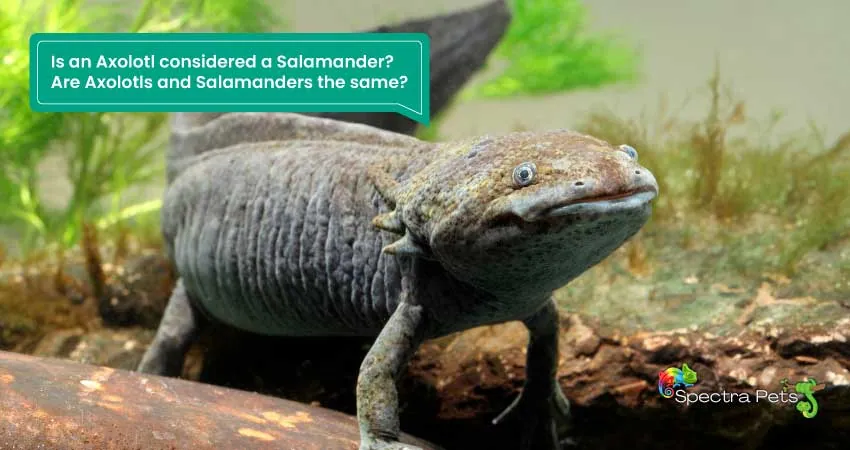
Axolotls are technically salamanders that have undergone intense morphing to gain fish-like traits. It is also possible to morph them into something that resembles more of a land-dwelling salamander. Even if they undergo metamorphosis, they do not lose their gills. That’s why they are also known as perennibranchiate salamanders.
You can attempt to forcefully morph an axolotl, but keep in mind that it can be extremely painful and stress-inducing to the animal, which is already quite fragile, and the poor soul will often face its demise while undergoing the process.
It is still possible for an axolotl to naturally morph into a salamander, provided they possess genes from the tiger salamander variant. However, this is an extremely rare situation, and by undergoing this transformation, the animal loses its regenerative properties.
How are Axolotls different from Salamanders? Can Axolotls become newts?
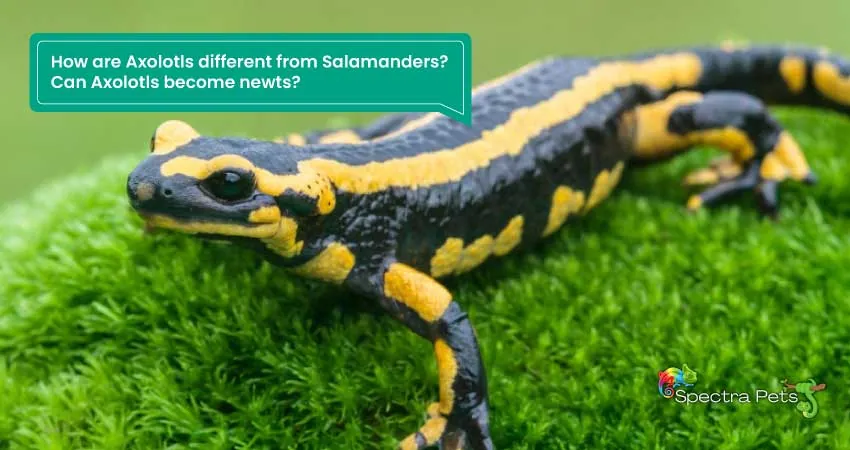
Axolotls are aquatic amphibians. As with all amphibians, they have a larval transformation. However, even as adults, they do not lose their larval traits. This trait is called neoteny, which makes the genetic makeup of axolotls unique and different from traditional salamanders.
Can Axolotls go through metamorphosis?
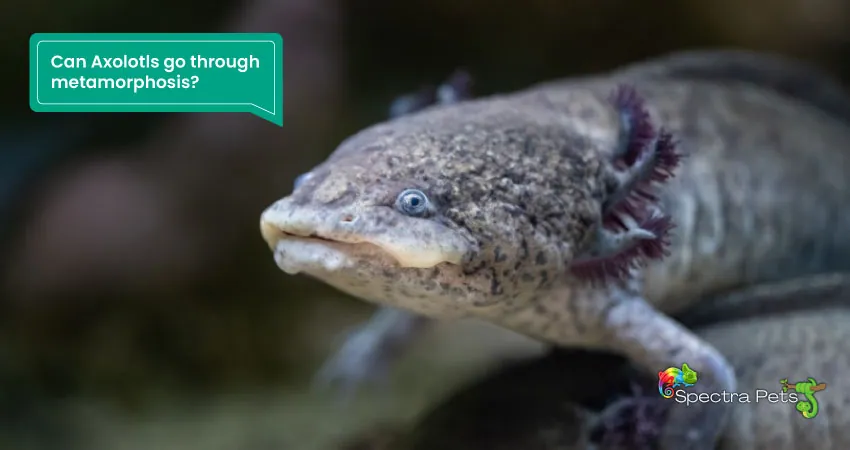
In order to answer these questions properly, we first need to understand exactly what metamorphosis is.
Metamorphosis is a process of transformation that most amphibians undergo during a certain period of their lifespan. This usually happens when the amphibian is still in its larval or juvenile form. The process usually consists of multiple stages. When an animal undergoes metamorphosis, it usually loses its larval features and evolves into an adult form that is (in most cases) suitable for both land and water.
It is possible for an axolotl to go through metamorphosis. However, as I have already mentioned, it is not a natural process for them. Axolotls are neotenic, and they lack the genes to go through metamorphosis, unlike salamanders.
Some very rare axolotls possess the genes of tiger salamanders, which allows them to naturally undergo metamorphosis. Otherwise, it can be forced upon them by using iodine in a laboratory, which is time-consuming and pretty harsh on the animal.
Why would an Axolotl morph?
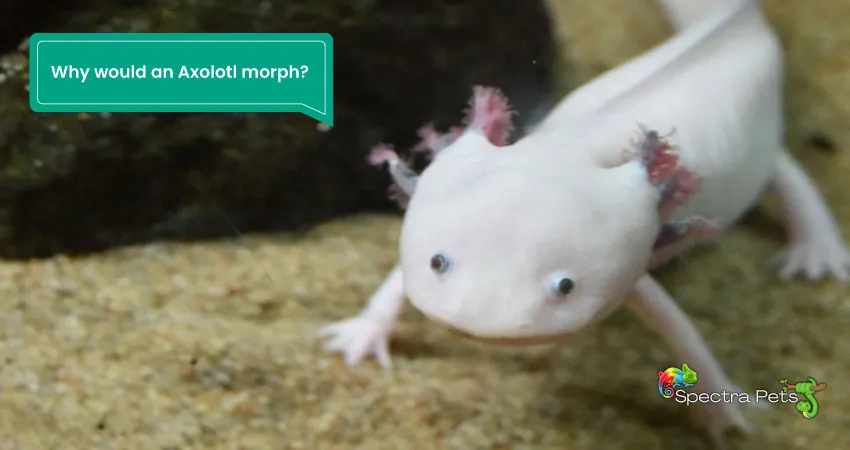
It is quite important to understand why an axolotl can potentially go through metamorphosis.
Exposure to increased amounts of iodine plays a vital role in the metamorphosis of an axolotl. Because of this mineral, the axolotl’s brain undergoes certain changes.
Thyroid hormone is another thing that accelerates the metamorphosis of an axolotl. Applying thyroxine to its rear water can make it morph.
Because captive-bred axolotls are typically crossed with other salamander species, they can inherit characteristics that allow them to undergo metamorphosis. This means that captive-bred axolotls can morph more frequently than wild ones.
How do you morph an Axolotl into Salamander?
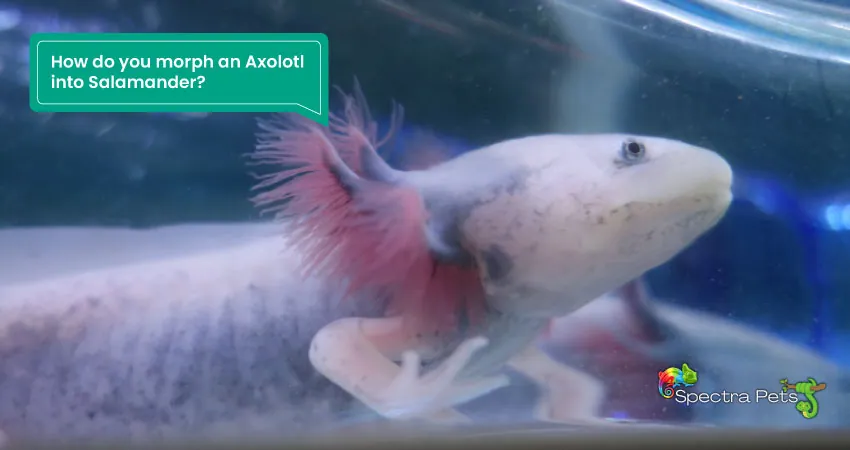
Well, the first thing you need to know regarding this is that most axolotls do not undergo metamorphosis naturally. It is a practice forced upon them in a laboratory, and the process takes about 6 months to a year. As fragile as they are, most axolotls do not survive past this transformation period.
How do I stop my Axolotl from morphing?
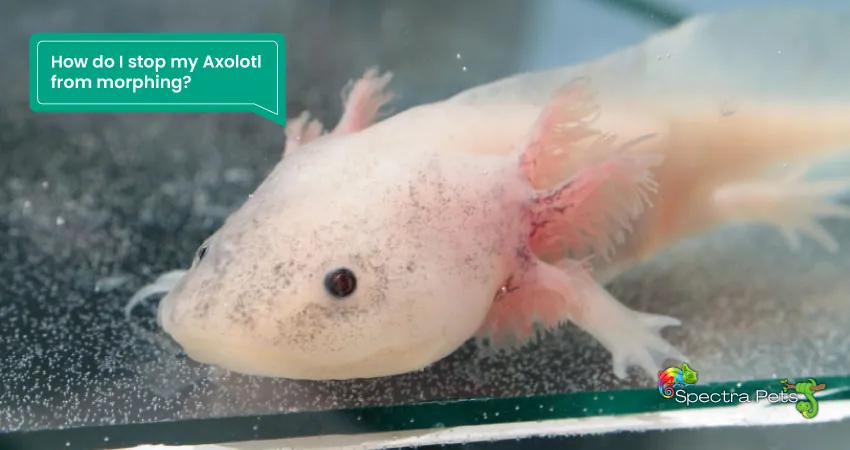
Now that you know how to morph an Axolotl, let’s have a look at how to stop it.
As increased amounts of iodine can accelerate an axolotl’s metamorphosis, decreasing iodine in its environment will do an excellent job of stopping it.
Make sure the environment and the food of your axolotl doesn’t contain iodine. Various insects that they consume contain this mineral, so introducing a variety in your pet ambystoma’s meal will do a fine job.
Frequently Asked Questions (FAQ)
Can Axolotls evolve into land animals?
On rare occasions, axolotls may evolve into salamander-like creatures. These animals have been seen to grow beyond their larval phase, and eventually, dwell on the land as salamanders.
Can Axolotls and Salamanders breed?
It is indeed possible to breed axolotls with tiger salamanders. Breeders choose to do this more often because it is quite difficult to find two different wild axolotls. As a result of this cross-breeding, most axolotls don’t remain true axolotls anymore.
Did Axolotls evolve from Salamanders?
Axolotls do relate to salamanders in terms of their origin. However, it is considered to be more of a devolution than an evolution. Scientists believe that axolotls have descended from salamanders, gained neoteny, and remained so because of better living conditions in the water.
Finishing Up
Even though you can force a transformation on axolotls, it is not recommended at all. Axolotls are not to be forced to morph; this is the conclusion I came across repeatedly when I was researching various books and web pages. I think we should heed this warning.
It is quite agonizing, and why would you want to do such a cruel thing to this poor, fragile, cute, goofy-faced, lovable amphibian?
References:
- “Axolotls: The Future of Limb Regeneration” by Ellen Heber-Katz and Ihor R. Lemischka (Book)
- “Regeneration in Axolotls: A Model System for Studying Mechanisms of Limb Regeneration” by Alejandro Sánchez Alvarado, published in BioEssays journal.
- “Molecular Mechanisms of Limb Regeneration in Axolotls” by Deepak Srivastava, Michael Levin and Alejandro Sánchez Alvarado, published in Nature Reviews Genetics journal.

